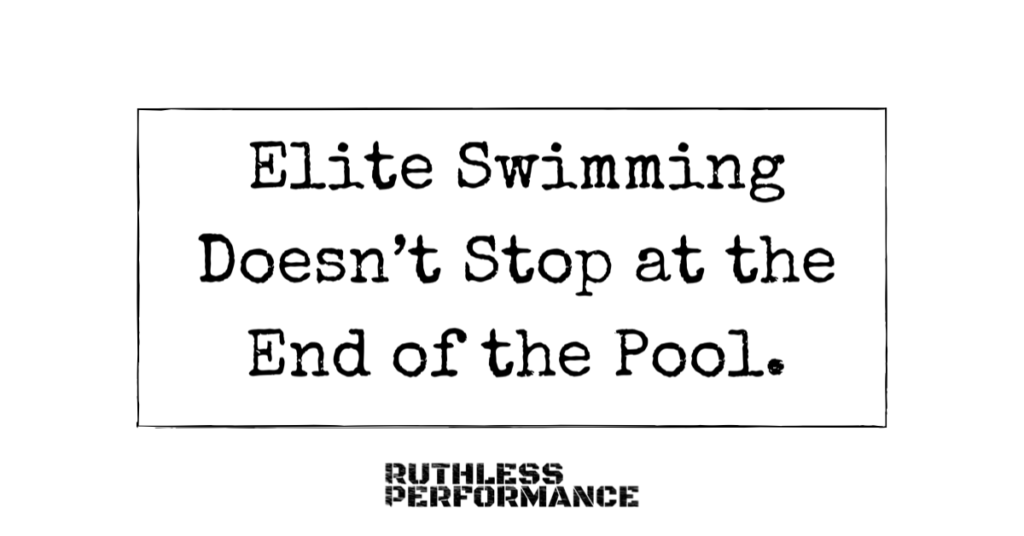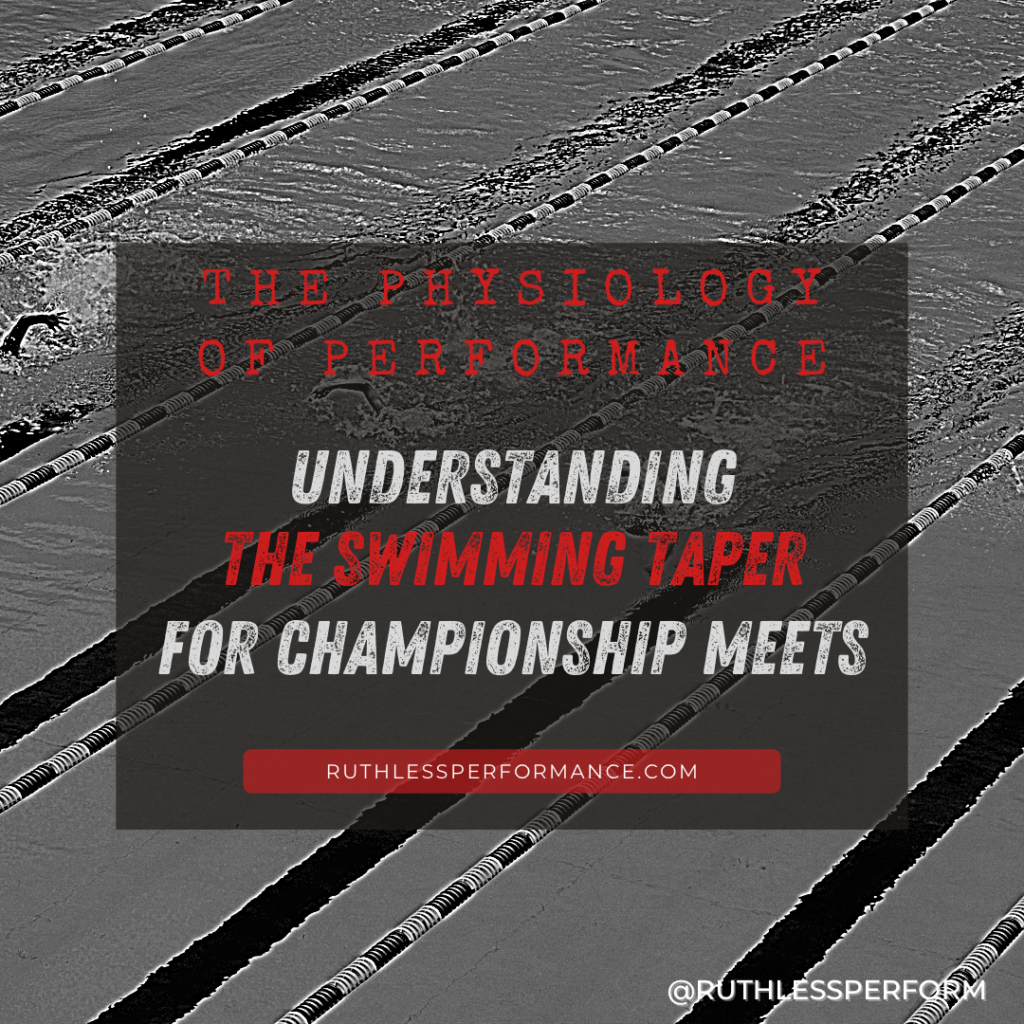The taper is an integral part of the competitive swimming experience. Swimmers usually first experience the taper at the end of their first competitive swim season, regardless of age or skill level.
Even though most swimmers have undergone a taper and most coaches have facilitated one, few understand the physiological underpinnings that make the taper work.
Today I’m going to provide a brief run-through of the taper, the science behind it, and how the taper should vary from athlete-to-athlete.
The Phases of Training
The following phases happen concurrently at two levels. They happen on a day-to-day basis, but they also happen on a week-to-week basis as well. Both of which can be summed up in phases as training, followed by rest, followed by recovery.
At the day-to-day level, training is followed by rest, proper nutrition, sleep, and then more training. The time you spend outside of the pool is actually when you are getting better at swimming because this is the time where you’re recovering from the stress of practice.
The time you spend outside of the pool is actually when you are getting better at swimming because this is the time where you're recovering from the stress of practice.- @ruthlessperform Click To TweetThe stress of practice, however, is necessary to create the damage necessary for the body to adapt. So although you’re getting better at swimming as you rest, the grueling practices that break down your body are needed to make it all happen.
Over a longer time span your body is doing the same thing. The difference is that from one practice to the next, your ability to recover is slowly falling behind the in-season demands of practice and dual meets.
The taper creates supercompensation. This is because as your training load is reduced, your body can overcome the demands of the practices with greater and greater ease. Eventually, your recovery will get so great that it outpaces your current training ability and makes you much faster, stronger, and able to endure longer races because of a greater build up of muscle glycogen (energy that the muscles use).
Here’s a more straightforward look at some of these terms and the progression of the taper…
Baseline Training Level
This is where you start, the moment a season or–to a smaller degree–when a new practice starts.
Training Stimuli
As you begin to train, your body is actually breaking down. The purpose of training is to get the body to break down in precisely the manner in which you want it to be built back up stronger.
This is why specificity is so important in energy system work and skill development.
This stage, at the macro level, is also where you’ll find yourself throughout the season. As the season wears on, your ability to recover may decrease. This is why almost immediately prior to the taper, you’ll find yourself exhausted, cramping up, and with less than stellar times at dual meets.
Recovery
When you are resting, eating (hopefully healthy foods), and doing active recovery work, your body is getting better. Blood flow delivers nutrients to damaged tissues, the central nervous system builds itself back stronger.
If this recovery is interrupted, like it almost always is during the swim season, recovery can lag behind where you need it to for peak performance. But this is good; the lag is usually a product of a greater and greater workload during practice.
Supercompensation
As the workload funnels down in both intensity, volume, and frequency (hence the name, taper), the body’s newfound ability to recover from stress allows adaptation to continue, even with less stimuli being utilized.
This is how the body is able to produce a faster time than you’ve ever swam before. If you could only recover to your previous ability, there would be no new adaptations, and therefore, no better times.
Not All Tapers Are Created Equal
…Nor should they be. All athletes have unique training histories, ability levels, muscle composition, central nervous system capabilities, and cardiovascular capacities.
The best way to develop a taper specific to you is to note your progress and skill based on your previous years’ tapers.
Some quick rules of thumb are as follows:
- Males require a longer taper than females
- Heavier muscled individuals require a longer taper than less muscled individuals
- Distance-based training programs require a larger taper than race-paced, intensity-focused programs
- Swimmers with longer training histories require longer tapers.
What About Dryland?
Since strength training for swimmers is a large part of what we do at Ruthless, at least touching on this is a good idea.
The science behind a taper from dryland work parallels what happens in the pool. We work our athletes hard up until the beginning of the taper. Here, our training does diverge. At this point, we only program exercises that the swimmers have utilized before as to reduce the chance of Delayed Onset Muscle Soreness.
Though varying on a case-by-case basis, we also begin to focus on more and more recovery modalities as the championship season approaches. In the weeks leading up to championship meets, we have our swimmers perform extensive mobility work, both pool-side and at-home.
Though they may be doing more work than their non-dryland competitors, the utilization of mobility and strength work actually expedites the recovery process and enhances the extent and length of the supercompensation phase.
Post-Taper
Since the time after the championship meets are the furthest times away from the next championship cycle (and thus the furthest away from the need for the greatest supercompensation), our ability to create a new baseline and training stimuli is at its highest.
We recommend a two-week complete break from sport, with only active recovery modalities like hiking, cycling, stretching, and mobility work being performed.
Since the usage of the central nervous system is its heaviest in the midst of championship races, time to recovery from these is an imperative.
But after those two weeks we’re right back at it with our eyes on the prize for next season.


